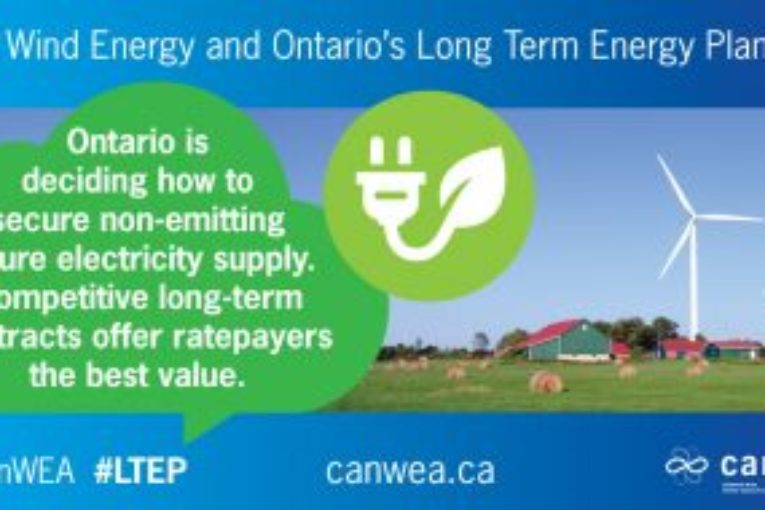
In planning Ontario’s future electricity system, we must never lose sight of a paramount objective – providing customers with the best possible value.
That’s the focus of one of CanWEA’s recommendations to the province’s Long Term Energy Plan (LTEP) update; specifically, that Ontario should “Utilize competitive procurements for long-term contracts to secure the lowest-cost, non-emitting electricity generation to ensure the best value for rate-payers.”
What does value mean to electricity customers? Traditionally it means that electricity has to be both affordable and reliable. Our LTEP recommendation addresses these customer needs and suggests the best mechanism for securing this power.
In drafting its LTEP update, the province is relying on the recent Ontario Planning Outlook. Our concern with the Outlook is that it does not provide risk assessments or contingency plans regarding supply adequacy; it does not discuss how the supply mix could change over the next 20 years; and it does not examine cost impacts.
For example:
Lower supply and/or higher demand equals substantial risks for Ontario – higher emission risks from increased natural gas-fired generation, and higher cost risks from commodity and carbon price increases.
Affordable and emission-free wind energy offers the best option for mitigating future supply risks. As for the best way to source this supply, CanWEA’s position is that competitive procurements for long-term electricity generation contracts would provide the best value for customers. Competitive procurements would balance the imperative of providing a reliable, affordable and emissions-free electricity supply for customers while ensuring a climate of confidence for investors to develop the supply.
Competitive procurement is the primary mechanism now used across Canada. Combined with an aggressive price ceiling, it would achieve the lowest long-term costs for ratepayers.
Here’s the proof. The most recent procurement of wind energy in Ontario had a price ceiling of 11.45 cents per kilowatt hour at a time when the average generation cost in Ontario was 11.14 cents. It resulted in an average 20-year procurement price of 8.45 cents, with one contract as low as 6.45 cents. With wind energy costs continuing to decrease as efficiencies are achieved (an Ontario success story!), future procurements would feature lower price caps and customers would benefit over the long term with stable and low cost electricity as a result.
Wind energy is quickly becoming the lowest-cost source of new electricity generation. Because it can be built quickly and with no risk to ratepayers from cost over-runs, wind energy that is competitively procured is the best option going forward for keeping Ontario’s electricity supply affordable and reliable. And more wind energy will mean less natural gas, helping the province better manage its greenhouse gas emissions and meet climate change goals.
That adds up to providing value to Ontario’s electricity customers.
Ontario Regional Director at the Canadian Wind Energy Association
You can read more of the news on source



